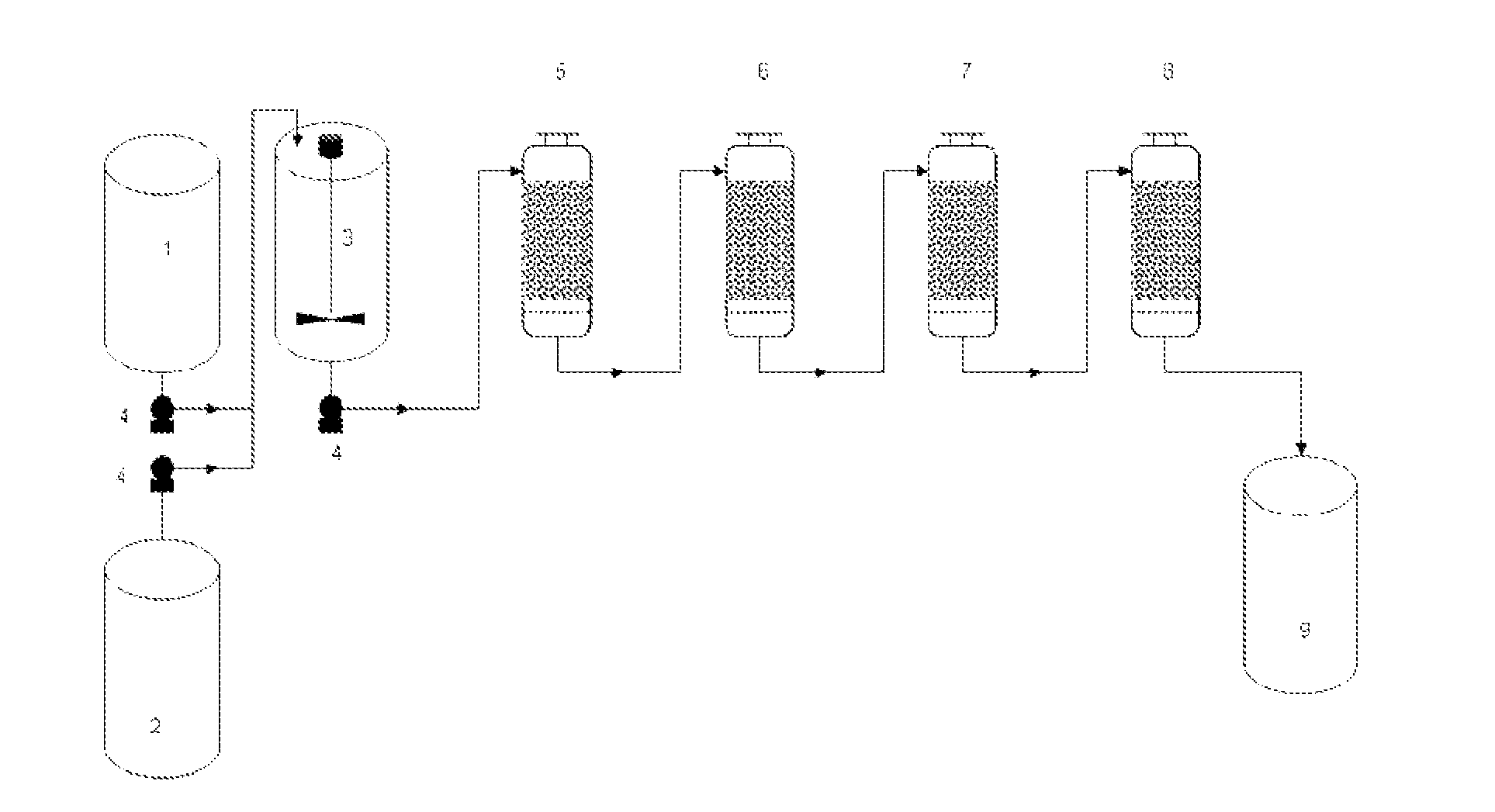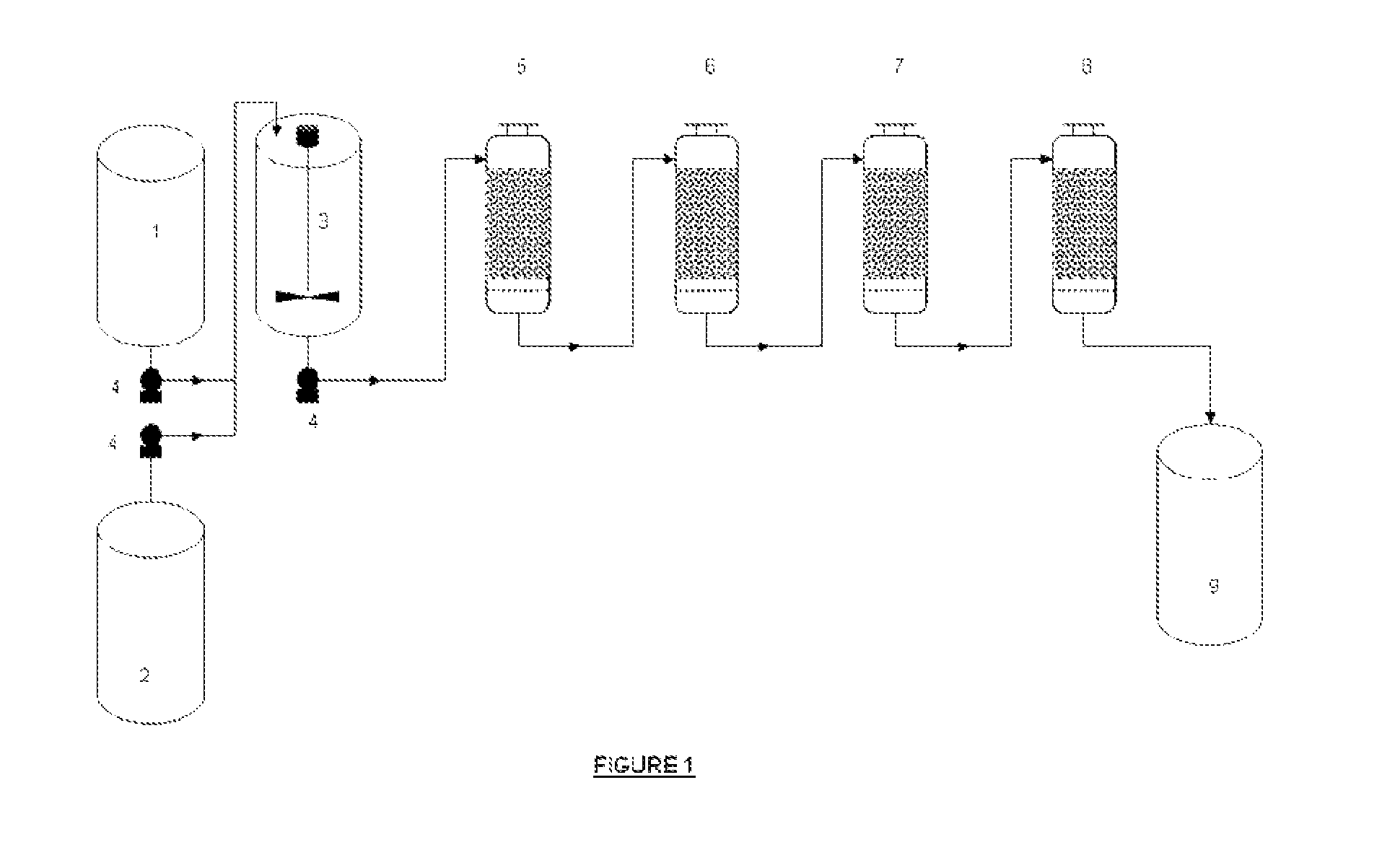Enzyme interesterification process
- Summary
- Abstract
- Description
- Claims
- Application Information
AI Technical Summary
Benefits of technology
Problems solved by technology
Method used
Image
Examples
example 1
Enzyme Performance Evaluation for Multiple Batch Reactions (MBA)
[0089]The objective of the MBA tests was to determine the performance of TLIM for the interesterification of fatty material. It was a rapid batch laboratory test consuming limited amounts of supplies. The starting fatty materials are blends of RBD palm oil (physically Refined, Bleached and Deodorized) and referred to as “oil” in Examples 1 and 2.
[0090]In an MBA test, an oil blend was interesterified in several batch reactions using TLIM (Thermomyces lanuginosus lipase from Novozymes) as catalyst. At the end of each of the batch reactions, the interesterified oil was decanted from the catalyst which remained in the reactor. Fresh oil was added to the catalyst and another batch reaction was carried out. Based on the average reaction rate of the enzyme determined in a number of consecutive batch reactions with re-use of the same TLIM, it was possible to estimate the enzyme deactivation rate as a function of oil volume that...
example 2
Enzyme Performance Evaluation for Continuous Packed Bed Reactors
[0093]This test was performed to verify if the presence of soap in the fatty material feed could lead to pressure built-up or even could lead to the plugging of the packed bed reactor and to determine the solid fat content of the interesterified fatty material produced over a very long production run.
[0094]A calculated amount of sodium hydroxide solution was mixed under high shear with RDB palm oil to produce a 50 ppm soaps / palm oil mix (in-situ production of soaps).
[0095]A lab-scale enzymatic continuous reactor was filled with pre-conditioned TLIM enzyme (Thermomyces lanuginosus lipase immobilized on silica granulates from Novozymes) and supplied with the 50 ppm soaps / palm oil mix from top to bottom. A manometer was installed between the feeding pump and the entrance of the column. The temperature of the reactor and of the oil was set at 70° C. and the flow-rate was adjusted to ensure full conversion of the oil at the ...
PUM
 Login to View More
Login to View More Abstract
Description
Claims
Application Information
 Login to View More
Login to View More - R&D
- Intellectual Property
- Life Sciences
- Materials
- Tech Scout
- Unparalleled Data Quality
- Higher Quality Content
- 60% Fewer Hallucinations
Browse by: Latest US Patents, China's latest patents, Technical Efficacy Thesaurus, Application Domain, Technology Topic, Popular Technical Reports.
© 2025 PatSnap. All rights reserved.Legal|Privacy policy|Modern Slavery Act Transparency Statement|Sitemap|About US| Contact US: help@patsnap.com



